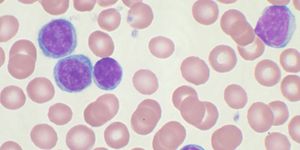Signs of PTSD in Brain Scans
Traumatic Brain Injury, or TBI, is an important concern in youth sports and of course in professional sports like football and boxing as well. The number of professional athletes who have suffered head injuries and gone on to develop PTSD, Chronic Traumatic Encephalopathy, and other neurological conditions continues to rise.
In the military, blast injuries are a major cause of TBI and preventing these injuries and protecting soldiers with better equipment is crucial. Statistics from the Department of Defense show that in 2015 more than 22,000 service members were diagnosed with a TBI as a result of their military service. The stats are on track to rise in 2016, with 13,000 TBIs in just the first three-quarters of the year.
PTSD and the related issues of depression, anxiety, and dementia are sometimes thought to be strictly an emotional issue, but a new study was presented at the American Academy of Neurology's Sport's Concussion Conference recently, and the findings show that there are physical differences in the brains of those who develop PTSD after a brain injury.
Joel Pieper, MD, MS, from the University of California, San Diego explained, "Many consider PTSD to be a psychological disorder, but our study found a key physical difference in the brains of military-trained individuals with brain injury and PTSD, specifically the size of the right amygdala. These findings have the potential to change the way we approach PTSD diagnosis and treatment."
The amygdala is the part of the brain that processes emotions, recalls stored memory and influences behavior. There are two parts to it, a right and a left amygdala. Most current brain studies posit that the right amygdala is where fear, the fight or flight response and aversion to stimuli that is upsetting are handled. In the research presented, 89 military service members who had suffered a mild traumatic brain injury were examined. 29 of these participants were diagnosed with significant PTSD in addition to their brain injury. The remaining 60 did not have PTSD.
With the help of brain scans, the team measured the volume of various parts of the brain anatomy in the study volunteers. In those who had PTSD in addition to a mild TBI, the volume of the amygdala was higher by about 6% compared to those who did not have a PTSD diagnosis. It's not known if the size difference in the amygdala pre-dated the injuries or not. Those involved with the study were also quick to point out that the results were just an example of two factors being associated: the volume of a brain region and the incidence of PTSD. Nothing in the study can point to a definitive cause and effect between larger amygdala volume and PTSD.
The type of injury is relevant as well. The study participants had suffered TBIs that occurred from blast injuries. In combat, the shock waves from explosions and weapon fire can cause brain injuries to soldiers in close proximity to anything that explodes or detonates. TBIs that are caused by concussions during sports are a different kind of injury and may not show the same the association. The video below explains the brain anatomy as well as the basics of PTSD, take a look.
Sources: American Academy of Neurology, Tech Times, Defense and Veterans Brain Injury Center









